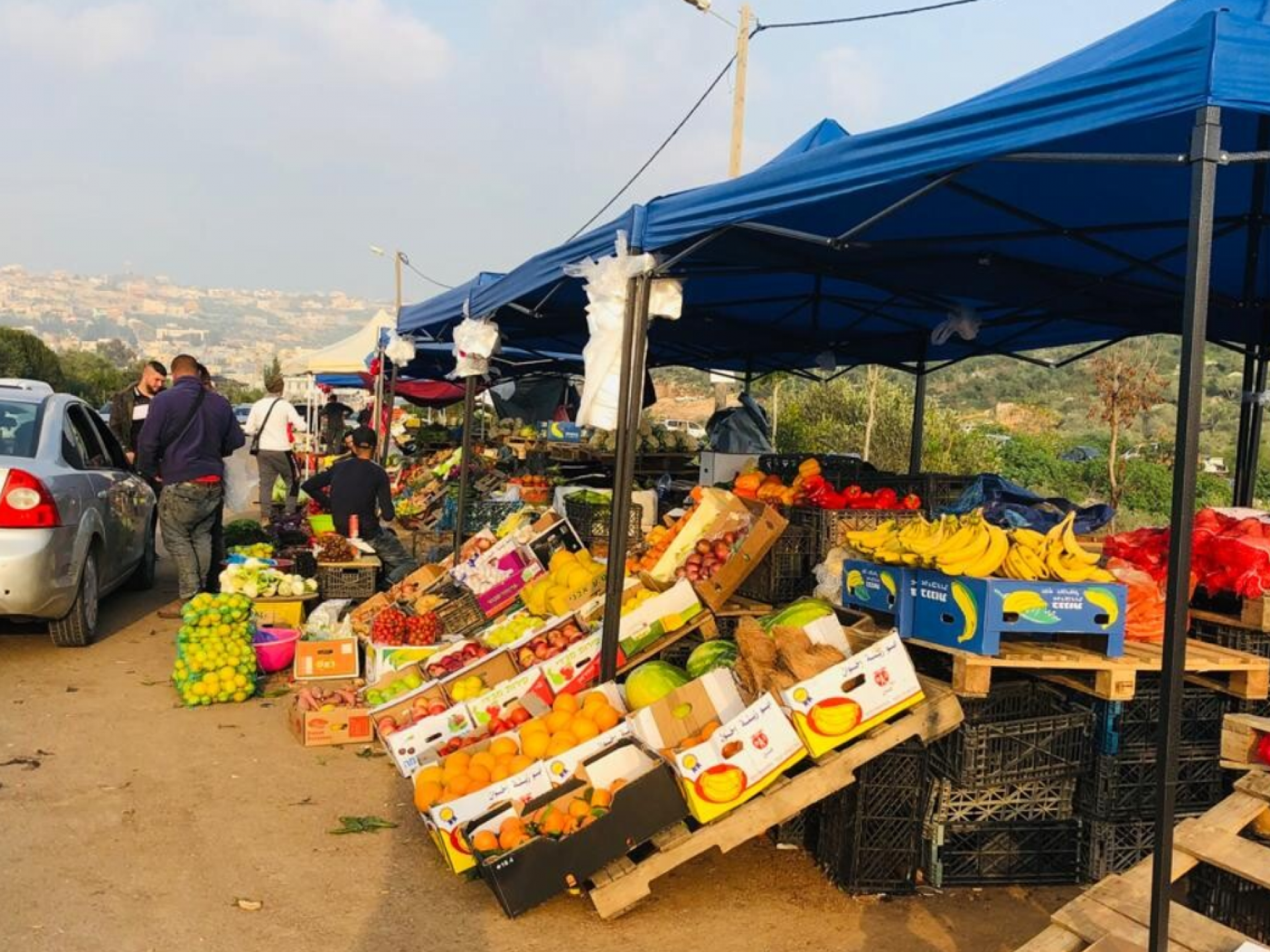Tora: The house of a villager who murdered a settler from Tal Menashe is demolished
After a long time in lockdown we finally returned to observe the checkpoints in the north of the West Bank. The drive was made more enjoyable because of the view of the many anemones flowering along the road Wadi Ara.
14:50 Barta’a-Reihan Checkpoint, Seamline Zone Side
New barbed barrier and road signs have been installed at the entrance and exit points to the parking lot. There are now concrete benches underneath the awning where people wait and there are several makeshift prayer rugs on the floor. The covered fenced-in walkway leading to the terminal has also been completed. The area of the checkpoint looks well – tended and the rose bushes are flowering.
We walked down the sleeve to the terminal. The settler’s kiosk was open and we could smell the aroma of freshly baked cakes. The settler told us that he would be opening the kiosk by the weekend for the Palestinians who had requested it. He also explained that because of the lockdown people are only going from the West Bank to the Seamline Zone. Others cross through the holes in the separation barrier. During the afternoons everyone crosses through the checkpoint but not through the terminal. Instead they walk around outside and pass through the turnstile. There are signs in Hebrew posted next to the turnstiles saying that Israelis are not permitted to cross because of COVID-19. On our way back to our car many workers passed us on their way home. We gave Sylvia’s phone number to two of them who had been banned from entering Israel and wished them luck in getting the ban eliminated. One person told us that in the morning it was crowded next to the inspection position, which is not good during COVID.
to the terminal. The settler’s kiosk was open and we could smell the aroma of freshly baked cakes. The settler told us that he would be opening the kiosk by the weekend for the Palestinians who had requested it. He also explained that because of the lockdown people are only going from the West Bank to the Seamline Zone. Others cross through the holes in the separation barrier. During the afternoons everyone crosses through the checkpoint but not through the terminal. Instead they walk around outside and pass through the turnstile. There are signs in Hebrew posted next to the turnstiles saying that Israelis are not permitted to cross because of COVID-19. On our way back to our car many workers passed us on their way home. We gave Sylvia’s phone number to two of them who had been banned from entering Israel and wished them luck in getting the ban eliminated. One person told us that in the morning it was crowded next to the inspection position, which is not good during COVID.
We drove past the Palestinian side of the checkpoint and saw that the parking lots and sides of the road were filled with cars. It was not clear to us why there were so many if people are only crossing to the seamline zone.
Work is being done on the dirt road connecting the road to the fields and groves between the village of Emricha and Yaabed – Dotan Checkpoint. We were not sure whether the roads are for the farmers or for the army. The road connecting Emricha to Yaabed is blocked again.
15:20 Yaabed-Dotan Checkpoint
There was a large bulldozer parked at the side of the checkpoint, evidently there because of the road construction that we had seen. Cars were driving in both directions and were undisturbed except for the concrete blocks along the road.
15:45 A’anin Checkpoint
Five people and a tractor with a plow attached were waiting to cross. The soldiers arrived on time – this time they came from the security road and opened the middle gate. The gate on the seamline zone side has been left open for some time. The middle gate being opened is ironic since there is a large hole in the fence right next to it that is as large as the gate itself.
16:00 Tura-Shaked Checkpoint
Two soldiers stopped us at the junction near Tura Checkpoint and told us that there was military activity near the Palestinian side of the checkpoint and they were only letting people pass who live near the checkpoint. They promised that tomorrow we would be able to drive there as usual. We thought that perhaps the activity was connected to the demolition of the home of the resident of Tura who killed Esther Horgan from Tal Menashe. We later saw the news and learned that this was true.
16:15 – East Barta’a Junction
During the weeks that we were not here the market at the junction has grown and developed. There were many cars parked along the road selling fruits and vegetables as well as toys, children’s chairs and other items. During the morning the place is even more filled with people including workers who cross through holes in the separation barrier.
We drove home through the city of Harish, which is being built by Palestinian laborers. Some of them were sitting on the side of the road waiting for rides.

